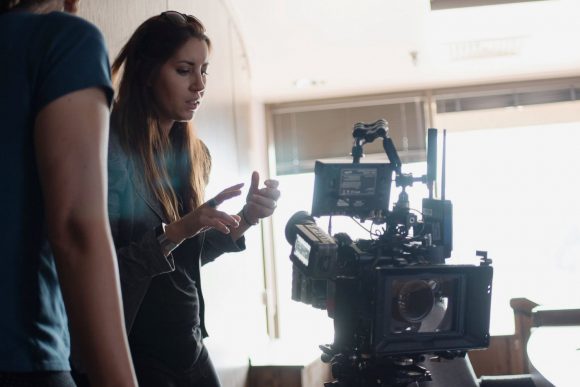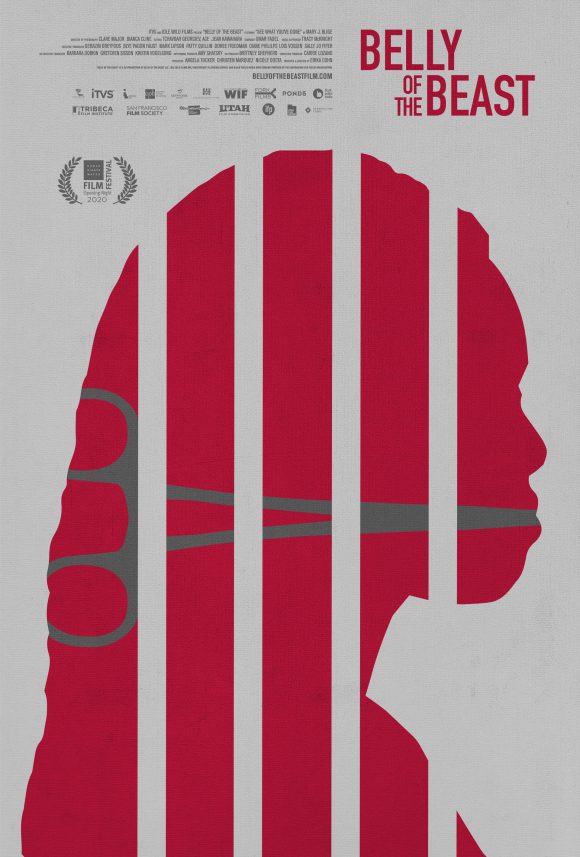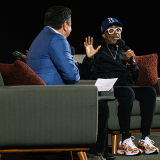Belly of the Beast Director Erika Cohn shares her journey to exposing healthcare and human rights abuse issues inside prisons
October 16, 2020
Centering the narrative around the experiences of those inside the “belly of the beast,” reframes the lens through which we view crime, punishment and rehabilitation. Amid a time of exploding prison populations, disproportionate incarceration of people of color, privatization and overcrowding, our criminal justice system is in crisis. Women of color are the fastest growing prison population and yet there’s a profound lack of resources, attention and interest surrounding women’s incarceration. Additionally, the immense dehumanization and fear of retaliation often inhibits incarcerated people’s voices from being heard, further marginalizing an already “near-invisible population.” Until now, this film has remained undercover to protect both the privacy of participants inside prison, and preserve the campaigns to end sterilization abuse. It is my hope that by shining a light on the healthcare and human rights abuses inside prison, Belly of the Beast will become a rallying point to call attention to other instances of modern-day eugenics and reproductive injustice. 
For many of us, prisons are so far out of sight, out of our consciousness, far from our physical reach – we are rarely granted access to worlds behind bars that aren’t dramatized or sensationalized. I wanted to reimagine how we visualize imprisonment, using imagery that evokes memory and passage of time, contrasting confinement and freedom…viscerally placing the viewer within intimate, vulnerable and uncomfortable spaces. From the shots of anxious feet dangling from the pelvic exam table, to the first person POV gurney shot rolling into surgery, to the camera peering down the shower drain – water droplets splashing in swirling slow motion, our team pursued a cinematic language that conjured the notion of consent…how can informed consent be obtained behind prison walls?
From my years as a legal advocate working with people inside women’s prisons, I recall waiting for meetings within a small brick attorney room devoid of color and life. Yet, when each person would enter, the room would dance with descriptives and energy…time stood still. Though our audience may not have the opportunity to meet all those I had the privilege to work with, I wanted to transport viewers into the worlds which were carefully described and shared with me. Our filmmaking team didn’t have access to some of these spaces, and therefore chose to carefully reconstruct, agonizing over every detail, feeling the weight of responsibility and gravity of accurately depicting each memory, each moment, each restricted space. Our team strove to visually demystify incarceration and cinematically push the boundaries of verité filmmaking, utilizing a combination of first person POV, recreation and observational footage.
Belly of the Beast Promotions
Turning back to clock to 2010, when attorney Cynthia Chandler and I first met:
I was incredibly inspired by her compassionate release work and intrigued by Justice Now, one of the only – if not the only – US organizations with board members in prison. I was haunted by their “let our families have a future” campaign, which exposed the multiple ways prisons destroy the human right to family, one of the most heinous being the illegal sterilizations primarily targeting women of color. This screamed eugenics. As a Jewish woman, the phrase “never again” was always profoundly in the back of my mind. When I learned about this different kind of genocide happening through imprisonment, through forced sterilization behind bars, I knew I had to get involved. Cynthia invited me to volunteer for Justice Now and I became a volunteer legal advocate, providing direct service needs for over 150 people in California’s women’s prisons. From there, I began working with people inside on a project that would become Belly of the Beast. Without their mentorship, support and wisdom – this film would not exist.
A few years later, Kelli Dillon and I met in Los Angeles, where she was working as a community intervention specialist on domestic violence prevention and gang intervention. We began collaborating on a variety of projects, including Belly of the Beast. The more I learned about her experiences as a survivor, her courage and selfless advocacy for others, I felt the film really needed to center around her story. As we reveal in the film, Kelli’s discoveries catalyzed Justice Now to begin investigating the illegal sterilizations in prison, through which we meet other survivors.
Belly of the Beast’s journey has captured my heart, my soul, my life. Navigating the nuances in approaching this project through multiple lenses: artist, activist, journalist, friend – humbled me and I was fortunate to be surrounded by an incredibly collaborative key creative team and brilliant advisors who helped guide our film through various challenges. I am in awe by the sheer volume of people who poured their hearts into this film. I am endlessly grateful to Kelli and Cynthia for allowing us to journey alongside them and to Courtney and the Justice Now team for revealing years of their David and Goliath battle on camera.



